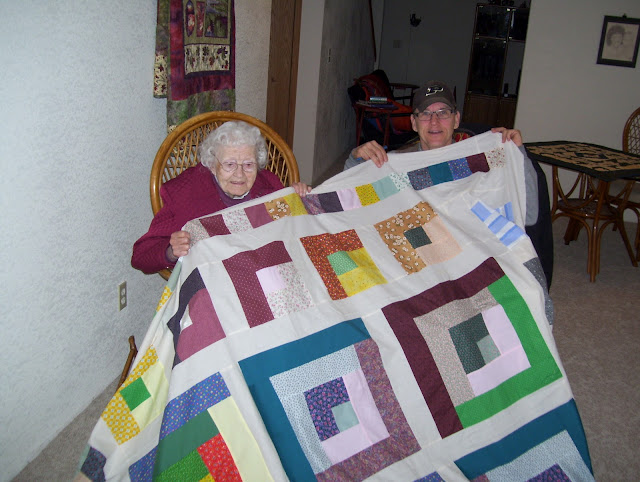This quilt I purchased the top at the flea market in Grand Rapids. I finished it. It is made from actual fabrics in 1930. The white is feed sack muslin and the flowers are flour sacks and clothing.
The Dresden plates were made by a friend of mine. They are made of actual 1930 flour sack fabrics. They are hand stitched.
These grandma's flowers were made by unknown quilter in Beach, ND. They are authentic fabrics from the 1930. I got them as the individual flowers.
This is a quilt made from replica 1930 flour sacks.
The following four quilts are from Don and Janet Haugan's family. They are authentic and have been lovely used.
Made from tapestry cloth. It is beautiful and a heavy quilt. It is done with a log cabin pattern.
single wedding ring pattern
Front made from old coats
Army blanket from WWI for the backing of the above quilt.
Crazy quilt. This quilt was used until just recently.
A big part of the history of quilts.
Feedsacks bring to mind poverty of the Great Depression but at the same time there is a romance to the idea that women could make something beautiful from something so mundane.
In truth feedsacks were used for sewing well before the depression and for several years after. The evolution of the feed sack is a story of ingenuity and clever marketing.
Initially farm and food products were shipped in barrels. Between 1840 and 1890 cotton sacks gradually replaced barrels as food containers. Many of the logos on the flour sacks were circular, a legacy from the time when these logos had to fit on the top of a barrel.
1 Women quickly discovered that these bags could be used as fabric for quilts and other needs.
Cotton had been king until the period of 1914 to 1929 when the price dropped out of the cotton market partially because synthetic fabrics like rayon became popular for dresses and undergarments. With the drop in the price of cotton even more companies began using cotton sacking as packaging.
It took a while for feed and flour sack manufacturers to realize how popular these sacks had become with women. Eventually they saw a great opportunity for promoting the use of feedsacks. First feed sacks began to be sold in colors then around 1925 colorful prints for making dresses, aprons, shirts and children’s clothing began to appear in stores. Manufacturers began to paste on paper labels making it far easier to remove them.
By the late 1930s there was heated competition to produce the most attractive and desirable prints. Artists were hired to design these prints. This turned out to be a great marketing ploy as women picked out flour, sugar, beans, rice, cornmeal and even the feed and fertilizer for the family farm based on which fabrics they desired. Some sacks displayed lovely border prints for pillowcases. Scenic prints were also popular. Manufacturers even made pre-printed patterns for dolls, stuffed animals, appliqué and quilt blocks.
Those who found they had more feed sacks than they could use were able to sell them back to the store where they were then resold. Chicken farmers went through a great many sacks of feed so the sale of feedsacks became a side business for some of them. Feed sacks were even sold by itinerant peddlers giving country women who lived far from town a chance to pick and choose from a variety of feed sack colors and prints. Women also traded feedsacks in order to get patterns that matched fabric they already had or for colors and prints they wanted. They were most creative in finding ways to get the varied fabric they wanted for their feed sack quilt.


















































